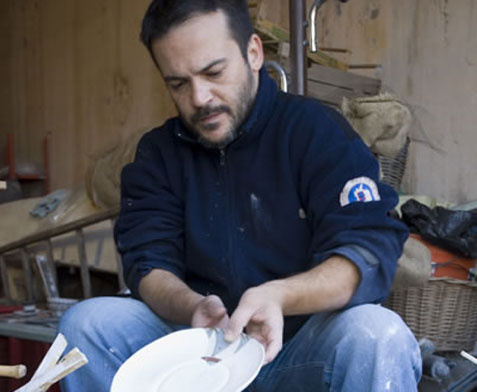
Giancarlo Livori was Born in Naples in 1967; he studied in Pescara where he obtained a degree in Architecture. In 1996 he moved to the Marche region, where he began working as an architect. Right in the Marche, the meeting with a Parisian designer artist, Annabelle Adie, introduced him to his path to ceramic art. In 2008 the first ceramics workshop, arGYla, opened in the old village of Grottammare located on the hill a few meters from the sea. In 2015 Giancarlo interrupts his relationship with arGYla and decides to follow a new path to delve deeper into the artistic trends to which he feels closest. Today Giancarlo continues his production in the same place. The new project “Lì” by Giancarlo Lìvori is for these, first of all a challenge. “Lì” from the first two letters of his surname is also the indication (there) of an undefined, not real place, like his ceramics. Objects with an organic shape underlined by the white dress that Giancarlo makes his creations wear to better highlight the imperfections and the "natural" movement of the shapes. Other times the objects are decorated in Engobbio: an ancient technique that is performed on still raw objects, using colored earth and/or oxides. The technique used by Giancarlo Lìvori for the formation of the pieces is also an ancient, primitive technique. A technique that does not use the lathe but rather clay salamis that are superimposed from time to time until the desired object is formed. The technique known as Colombino (coil Technique) allows you to create objects of various shapes. Sometimes he leaves the objects thus obtained as unique pieces, other times he obtains plaster casts from them which allow him to reproduce, by casting, the same object several times. The molds, however, have a short life because they are made of plaster. Plaster, as we know, is a perishable material. The molds tend to get damaged and therefore must be used a limited number of times. Then we move on to other forms. Giancarlo Lìvori believes that certain techniques should not be lost, they are the hallmark of our past, of a country known throughout the world for its artisan excellence. It's not that he feels he holds the secrets of this ancient technique, there are many who use it, but they believe that manual processing should be shared and taught today more than ever.
In fact, he organizes ceramic courses in his Grottammare workshop.